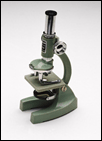| VOLUME 32, NUMBER 23 | THURSDAY, March 15, 2001 |
Identifying the causes and mechanisms of tooth decay, one of the most common chronic infectious diseases of mankind, is a primary goal of dental researchers.
One type of bacteria, Streptococcus mutans, is a known cavity-inducing organism. Investigators at the University of Connecticut and UB, in previous research, suggested that a second bacterium, Streptococcus gordonii, also may cause tooth decay, but they didn't know how much and under what conditions.
The investigators now have confirmed that Streptococcus gordonii induces tooth decay in an animal model, but that it is less virulent than Streptococcus mutans. They also have shown that Streptococcus gordonii is equally decay-inducing in the presence of either ordinary sugar (sucrose) or high-fructose corn sweetener.
These results are in contrast to the known activity of the more virulent Streptococcus mutans, the decay-causing ability of which is strongly augmented by sucrose, but is weaker in the presence of the corn sweetener.
"These results provide one more piece of information about how tooth decay occurs," said Jason M. Tanzer, professor of oral diagnosis and head of the Division of Oral Medicine in the School of Dental Medicine, University of Connecticut Health Center, and lead researcher on the study.
"Every piece of new information about this condition, which costs the American public more than $58 billion annually for treatment, is potentially important for the public health."
Frank A. Scannapieco, associate professor of oral biology at the UB School of Dental Medicine, is co-author of the study.
Tanzer and Scannapieco set out to determine if sucrose is more potent in supporting tooth decay caused by Streptococcus gordonii than another sugar found especially in soft drinks. For this study, they chose to investigate the relationship between high-fructose corn sweetener, now used as a substitute for sucrose in most sweet drinks, and infection by either Streptococcus gordonii or Streptococcus mutans. High-fructose corn sweetener, like sucrose, also is found in many baked goods and other foods.
To assess the cariogenicity (cavity-producing potential) of these two sugars, the researchers supplemented the drinking water of their study animals with 10 percent sucrose, 10 percent high-fructose corn sweetener, or 10 percent maltodextrin (a caloric, digestible complex carbohydrate) supplemented with an artificial sweetener to insure comparable taste and caloric intake. Solid diets and nutritional status were the same for all groups.
Some of the animals on each regimen were inoculated with either Streptococcus gordonii or Streptococcus mutans, while others remained uninoculated.
Results showed that uninoculated animals had relatively few cavities, regardless of the diet sweetener. Inoculated animals developed higher levels of tooth decay if they drank water supplemented with either sucrose or high-fructose corn sweetener than if they drank water supplemented with the artificial sweetener and maltodextrin.
If the rats were infected with Streptococcus mutans, however, they developed the highest decay levels if they drank sucrose, researchers said. In contrast, in rats infected with Streptococcus gordonii, decay levels were not as high, and there was no clear distinction between the effects of sucrose and high-fructose corn sweetener, findings showed.
"These results suggest that Streptococcus gordonii must be considered a possible human decay-causing bacterium," Tanzer said. "They also suggest that sucrose and high-fructose corn sweetener appear equally supportive of decay induced by the weaker, decay-causing Streptococcus gordonii, in contrast to the more virulent Streptococcus mutans, whose decay-causing ability is strongly augmented by sucrose, but less so by high-fructose corn sweetener."
The research was supported by a grant from the National Institutes of Health.
Front Page | Top Stories | Briefly | Q&A | Electronic Highways | Mail

 Second bacterium confirmed as another cause of tooth decay
Second bacterium confirmed as another cause of tooth decay
Research Digest | Focus on Research | Sports | Exhibits, Notices, Jobs
Events | Current Issue | Comments?
Archives | Search | UB Home | UB News Services | UB Today